How to get Redash on GCP(Google Cloud Platform)
This section describes how to launch and connect to Redash solution on Google Cloud Platform.
- Open Redash - Make sense of your data to take informed decisions listing on GCP Marketplace
- Click Launch.

-
It will take you to the agreement page. On this page, you can change the project from the project selector on top navigator bar as shown in the below screenshot.
-
Accept the Terms and agreements by ticking the checkbox and clicking on the AGREE button.
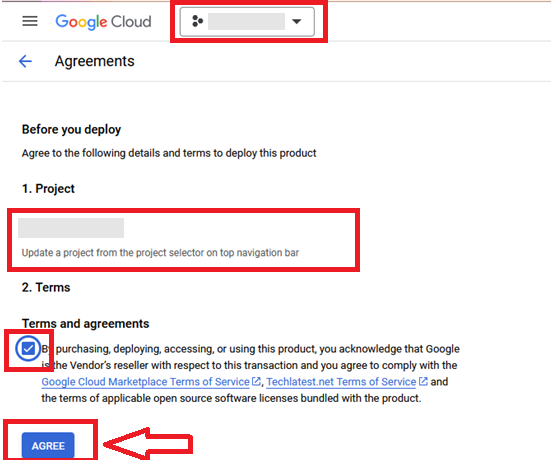
-
It will show you the successfully agreed popup page. Click on Deploy.
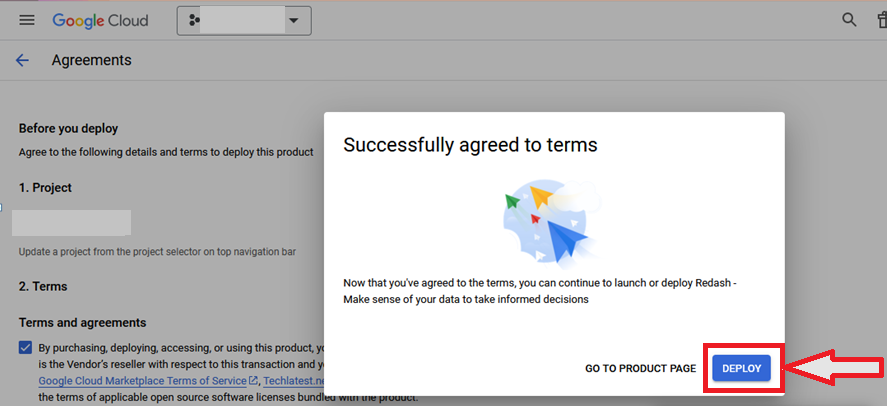
-
On deployment page, give a name to your deployment.
- In Deployment Service Account section, click on Existing radio button and Choose a service account from the Select a Service Account dropdown.
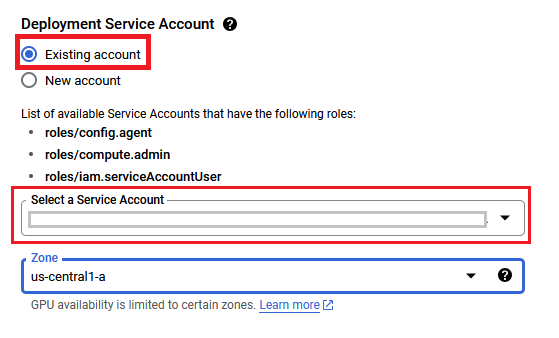
- If you don't see any service account in dropdown, then change the radio button to New Account and create the new service account here.
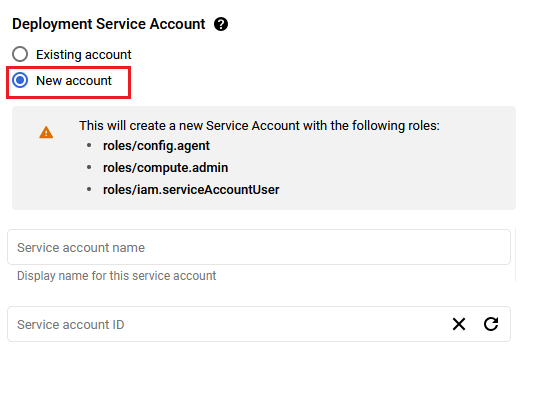
- If after selecting New Account option, you get below permission error message then please reach out to your GCP admin to create service account by following Step by step guide to create GCP Service Account and then refresh this deployment page once the service account is created, it should be available in the dropdown.
You are missing resourcemanager.projects.setIamPolicy permission, which is needed to set the required roles on the created Service Account
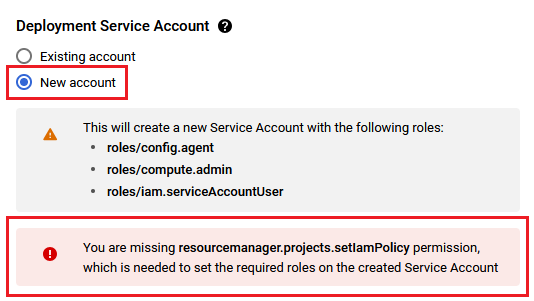
- Select a zone where you want to launch the VM(such as us-east1-)
- Optionally change the number of cores and amount of memory. ( This defaults to 1 vCPUs and 3.75 GB ram)
- Optionally change the boot disk type and size. (This defaults to ‘Standard Persistent Disk’ and 20 GB respectively)
- Optionally change the network name and subnetwork names. Be sure that whichever network you specify has ports 22 (for ssh), 3389 (for RDP) and 80 (for HTTP) exposed.
- Click Deploy when you are done.
- Redash - Make sense of your data to take informed decisions will begin deploying.
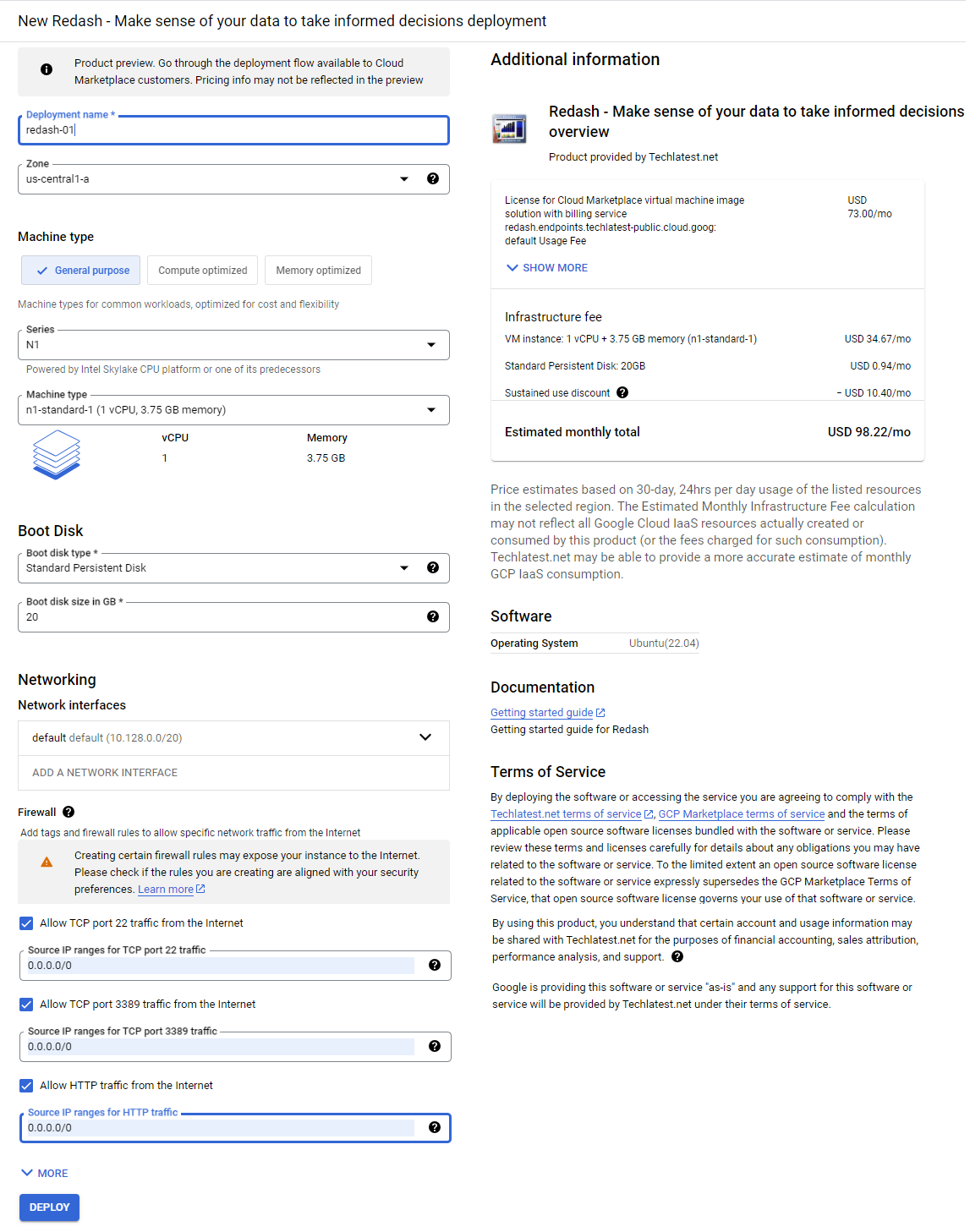
-
A summary page displays when the compute engine is successfully deployed. Click on the Instance link to go to the instance page .
-
On the instance page, click on the “SSH” button, select “Open in browser window”.
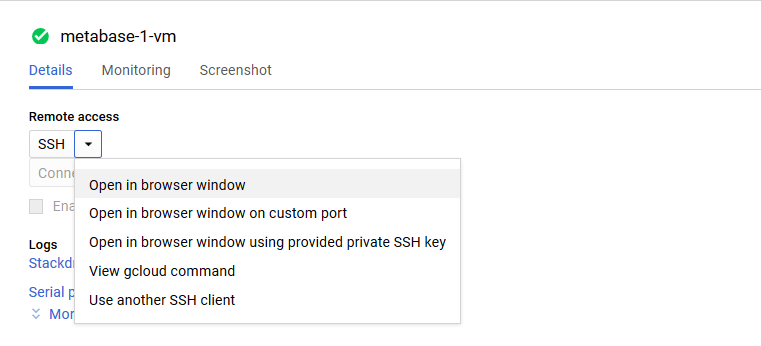
- This will open SSH window in a browser.
- Run below command to set the password for “ubuntu” user

-
Now the password for ubuntu user is set, you can connect to the VM’s desktop environment from any local windows machine using RDP or linux machine using Remmina.
-
To connect using RDP via Windows machine, first note the external IP of the VM from VM details page as highlighted below

-
Then From your local windows machine, goto “start” menu, in the search box type and select “Remote desktop connection”
-
In the “Remote Desktop connection” wizard, paste the external ip and click connect

- This will connect you to the VM’s desktop environment. Provide “ubuntu” as the userid and the password set in step 6 to authenticate. Click OK
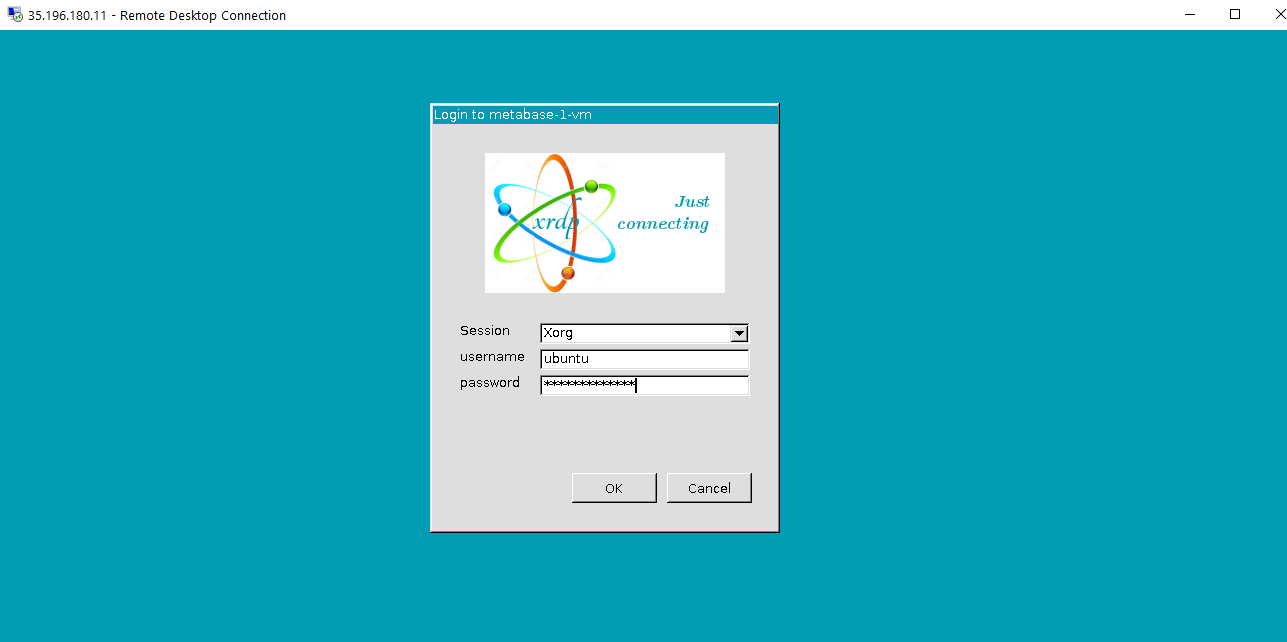
- Now you are connected to out of box Redash environment via Windows machines.
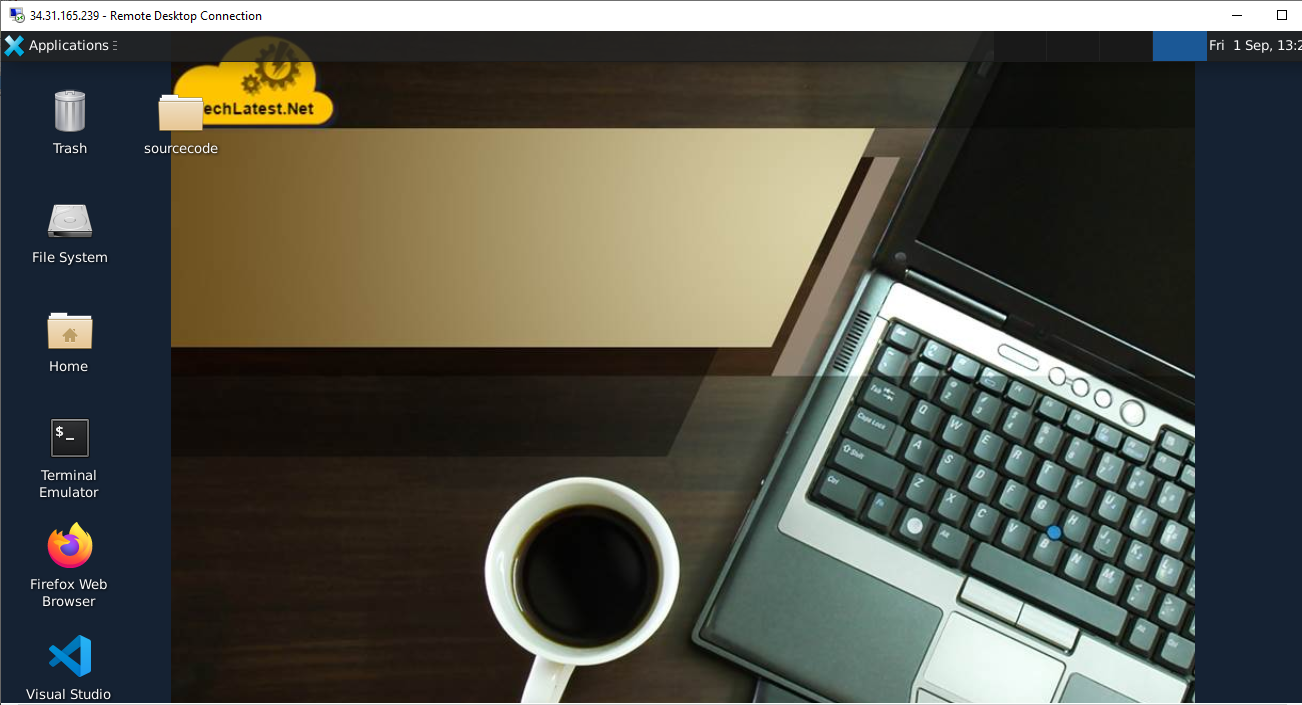
- To connect using RDP via Linux machine, first note the external IP of the VM from VM details page,then from your local Linux machine, goto menu, in the search box type and select “Remmina”.
Note: If you don’t have Remmina installed on your Linux machine, firstInstall Remmina as per your linux distribution.
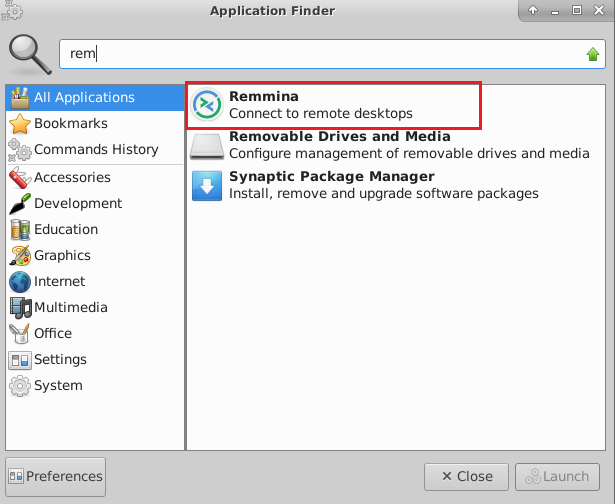 14. In the “Remmina Remote Desktop Client” wizard, select the RDP option from dropdown and paste the external ip and click enter.
14. In the “Remmina Remote Desktop Client” wizard, select the RDP option from dropdown and paste the external ip and click enter.
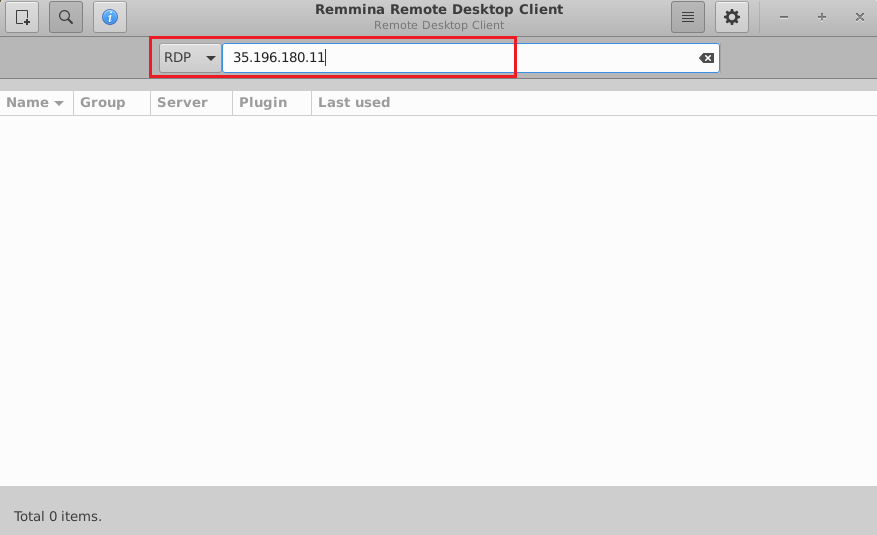 15. This will connect you to the VM’s desktop environment. Provide “ubuntu” as the userid and the password set in step 6 to authenticate. Click OK
15. This will connect you to the VM’s desktop environment. Provide “ubuntu” as the userid and the password set in step 6 to authenticate. Click OK
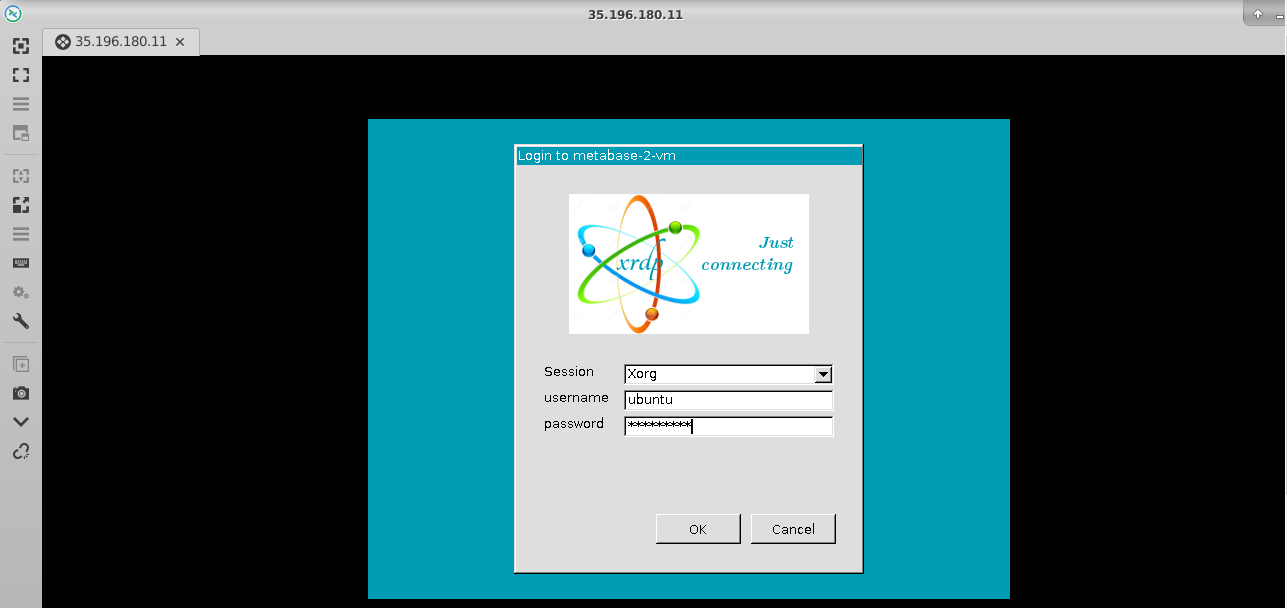 16. Now you are connected to out of box Redash environment via Linux machine.
16. Now you are connected to out of box Redash environment via Linux machine.

- Once your vm is up and running, you can access Redash setup page by going to http://VM_Public_IP. Provide the basic information on this initial setup page and click on setup button at the bottom.
Note: Please use http and not https in the URL when accessing Redash Web UI, e.g. http ://35.223.255.180
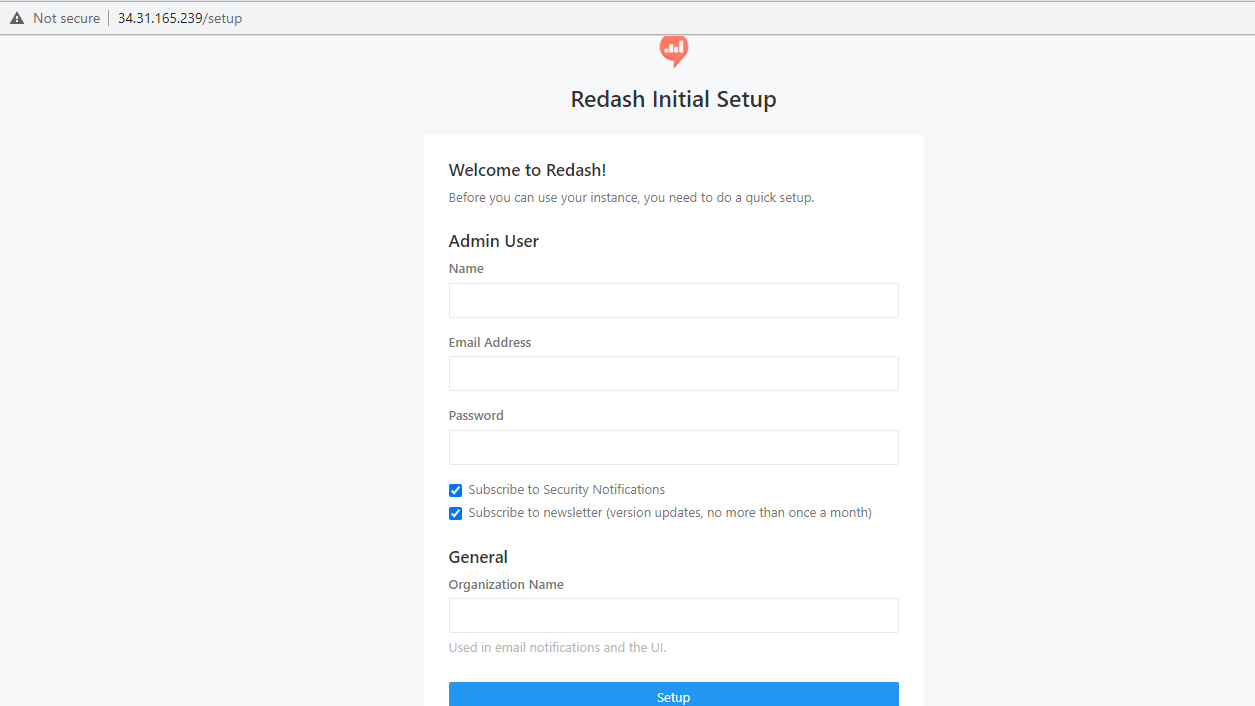
- It will take you to the Redash Home page.
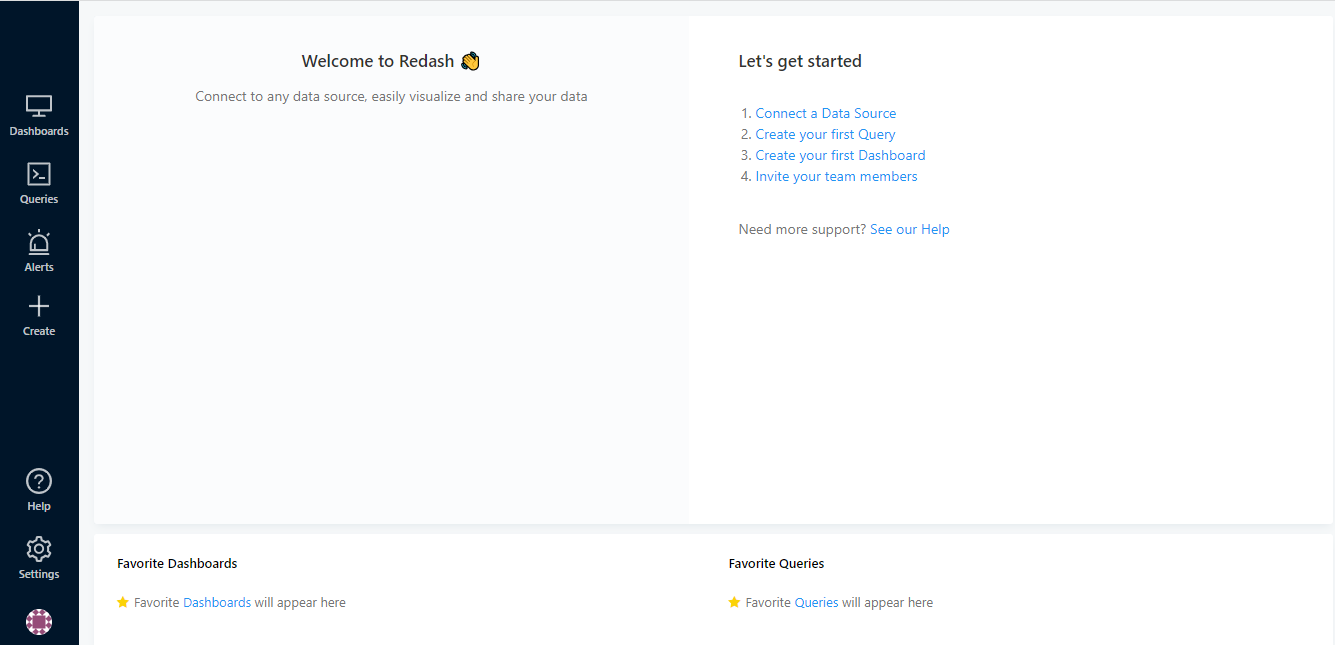
- You can add more users by going to Settings and selecting Users tab.
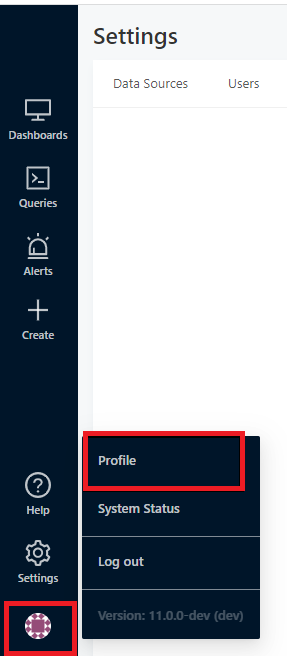

- If for some reason, your Redash Web UI is not coming or showing below proxy error message. Then follow these steps.
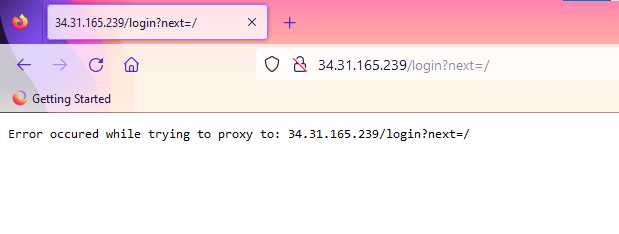
- Connect to VM via SSH and check the container running status by running:

- If the container are in running status then stop them by running
sudo docker stop redash_postgres_1 redash_redis_1 redash_server_1 redash_worker_1 redash_scheduler_1 redash_email_1

- Now again check the status with docker ps -a command as shown above and it should show container status as Exited

- Now start the containers using -
sudo docker start redash_postgres_1 redash_redis_1 redash_server_1 redash_worker_1 redash_scheduler_1 redash_email_1

- Once containers are up and running you can access the Redash Web UI using http://public-ip
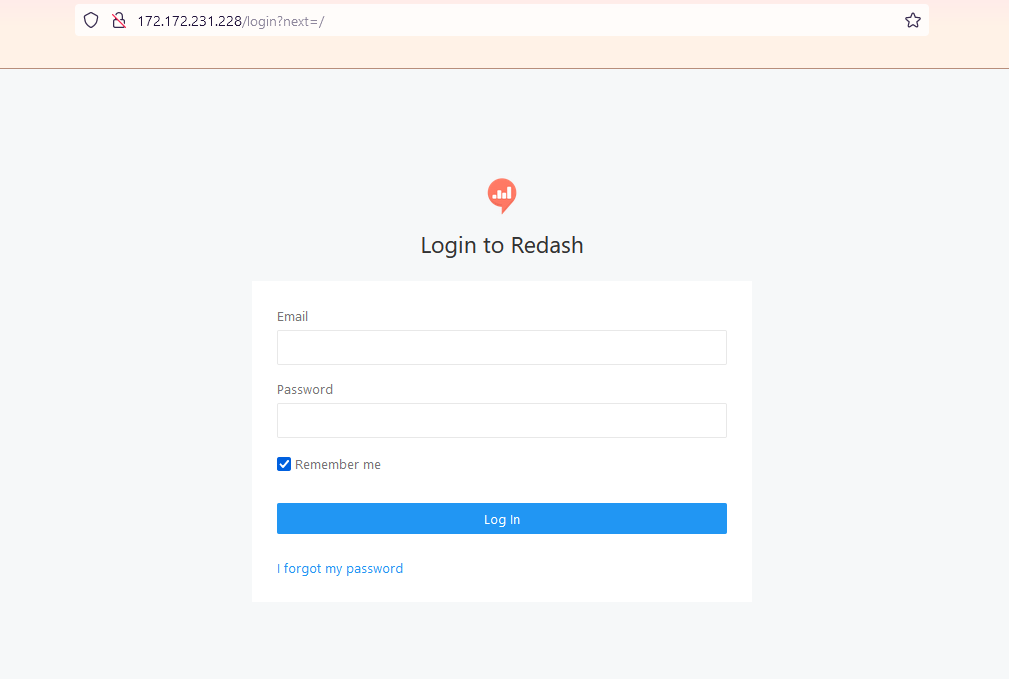













 14. In the “Remmina Remote Desktop Client” wizard, select the RDP option from dropdown and paste the external ip and click enter.
14. In the “Remmina Remote Desktop Client” wizard, select the RDP option from dropdown and paste the external ip and click enter. 15. This will connect you to the VM’s desktop environment. Provide “ubuntu” as the userid and the password set in step 6 to authenticate. Click OK
15. This will connect you to the VM’s desktop environment. Provide “ubuntu” as the userid and the password set in step 6 to authenticate. Click OK 16. Now you are connected to out of box Redash environment via Linux machine.
16. Now you are connected to out of box Redash environment via Linux machine.









